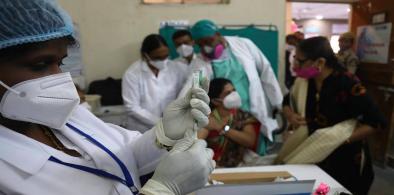Are we observing World Environment Day or World Emergency Day on June 5?
State of the environment today is certainly in a state of emergency. Many would call June 5, 2020, as World Emergency Day. In reality, today environment and emergency have indeed become synonyms, writes Rajendra Shende for South Asia Monitor

This year World Environment Day is being observed in the midst of a global emergency of COVID19. There are add-on emergencies like a violation of human rights, apartheid, war refugees, locust attacks, hurricanes and, of course, political upheavals. One wonders if it is not the World Emergency Day. Amidst such a dangerous crisis and planetary emergency, it is indeed a bold move by the United Nations Environment Programme (UNEP) to have decided ‘Celebrate Biodiversity’ as a theme this year for World Environment Day on June 5. One muses what there is to celebrate about biodiversity of our sick planet. Particularly when Intergovernmental Science-Platform for Biodiversity and Ecosystem (IPBES) in its report launched one year back stated that more than one million species that represent biodiversity are in the risk of extinction and that the rate of extinction of species today is hundreds of times more than the average rate over the last 10 million years ago.
In more than four decades since the World Environment Day is being observed worldwide, it is a matter of grave concern that the global ecosystem has dangerously deteriorated and many have even crossed planetary boundaries and over-burdened the earth’s carrying capacity. Scarcity of water and air pollution are two key results of climate change, and are just about a couple of examples of daily nightmares with which human society is struggling with.
According to the United Nations, four out of every 10 people globally are facing water scarcity. Already Cape Town, the second most populated city in South Africa of more than 40 million people, has become a leading example of being world’s first city to run out of water. It is estimated that 10 to 20 major cities in the world, including Beijing, Bengaluru, Tokyo, London and Miami (scheduled to hold next G7 meeting) will soon be without drinking water. As per the World Health Organization (WHO), nearly seven million deaths occur due to indoor and outdoor air pollution annually. A new report from the NITI Aayog, Government of India’s topmost think tank said, India is currently suffering from the worst water crisis in its history.
Lockdown lessons
Maybe, we humans, because of the global lockdown, for the first time began observing nature in a meaningful way and came to realise the importance of biodiversity. Some of us even thought that we need to rethink on how we had grabbed animal habitat and the urgent need to return it to them. Are we celebrating that newly acquired ability to understand the meaning of biodiversity?
Romanticizing such idea is definitely not a reason to celebrate biodiversity. There have to be some practical and doable solutions.
State of the environment today is certainly in a state of emergency. In reality, today environment and emergency have indeed become synonyms. However, there are positive signs and some work is being done. Beijing University and IIT-Gandhinagar have decided to carry out a benchmark study of biodiversity in their campuses to give skill and project-based education on Sustainable Development Goals (SDGs) and setting the biodiversity targets in a quantified way. Other universities are coming forward and using the framework developed by NGOs like TERRE Policy Centre under Smart Campus Cloud Network (sccnhub.com).
Importance of urban forestry
Recognising the high proportion, nearly 30 percent, of the degraded land in India and mindful of the link between biodiversity, land and forest, India’s Prime Minister Narendra Modi in 2019 during UNCCD ( United Nations Convention for Combating Desertification) pledged that India would enhance its target of restoring the degraded land by five million hectares. It does not appear to be a huge enhancement when one considers a tremendous advantage for food, water, and biodiversity, but surely the direction is clear. Restoration of the degraded land can be done in a number of ways. Afforestation is one of them. Urban forestry is out-of-box way to make cities green, to purify its air, and develop carbon sink, enhancing holding capacity of water, developing cool-spots (as against hot-spots observed due to climate change) and following a healthy lifestyle.
On June 5, the Ministry of Environment, Forest and Climate Change (MOEFCC) is launching a nation-wide and ambitious urban forestry project. The PPP (Public Private Partnership) model has been identified as the effective mechanism to implement it. Green and innovative landscape designs would be followed by selecting healthy and tall indigenous trees for the plantation. The private sector would be invited for a technical and financial contribution. Forest department of the government would identify and secure the degraded and unwanted land, while ISRO (Indian Space Research Organisation) would monitor the plant growth from space satellites. Incentives and award schemes have been drafted for the cities and towns.
The demonstration of urban forestry is already in place in the megacity of Pune. TERRE Policy Centre, a Pune-based NGO which is more an action platform rather than a think tank, has successfully established an urban forest in the middle of the city. Within four years of its launch by Union Minister of Environment, Prakash Javadekar, the degraded land of nearly 20 hectares, which otherwise would have been used for the concrete jungle, has now been transformed into an urban forest. Many citizens have donated funds to plant trees in memory of their loved ones. Thousands of city dwellers now benefit from this urban forest.
Tata Motors and Persistent Systems from the private sector joined hands to complete the PPP model. Volunteers from universities and colleges come on weekends to water the plants, cut the unwanted grass and to plant more trees to help forest department.
More than 10,000 indigenous trees now form the forest where thousands come regularly for health walk; tree absorb nearly 130 metric tonnes of carbon dioxide and produce 562 tonnes of oxygen annually. But trees have not demanded any cost for their services for the absorption of GHGs (greenhouse gas) and producing life-supporting products including oxygen, when the oxygen cylinders for COVID patients continue to be in great demand with high price. That is the beginning of green economics being promoted by UNEP and which can be deployed by valuing the services of ecosystems. That could, now be the reason to ‘Celebrate Biodiversity’ on June 5.
(The writer is Chairman TERRE Policy Centre and former Director, UNEP. The views expressed are personal. He can be contacted at shende.rajendra@gmail.com)




















Post a Comment